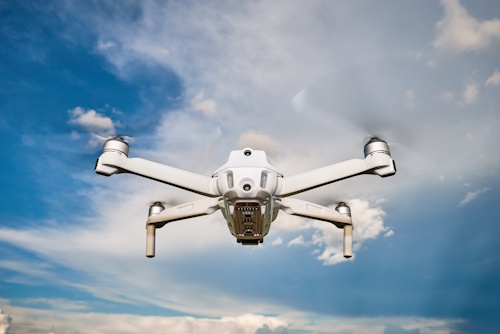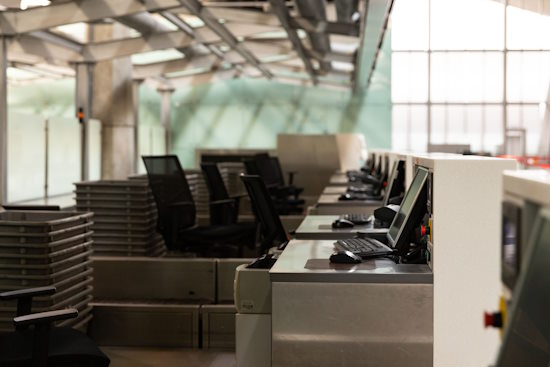What are jet bridges and how could they be improved?
Anyone who’s flown on a plane since the 1960s has almost certainly boarded the plane through a jet bridge. Jet bridges (also referred to as gangways, skybridges, and passenger boarding bridges) allow passengers to board a plane without needing to be exposed to the elements, as well as improve terminal security. However, many jet bridges utilize cable festoons for power, leaving cables exposed to the elements and more likely to break. This blog will explore the history of jet bridges, their functionality, and the power supply that keeps them operating smoothly — along with a more effective alternative.
What is a jet bridge?
Jet bridges are enclosed “tunnels” on wheels that connect to the terminal at one end, with the other end free to move and adjust, creating a bridge from the plane door to the terminal. They serve two primary purposes: providing passengers a way to safely embark and disembark from aircraft without being exposed to the elements, and enabling efficient ground handling operations.
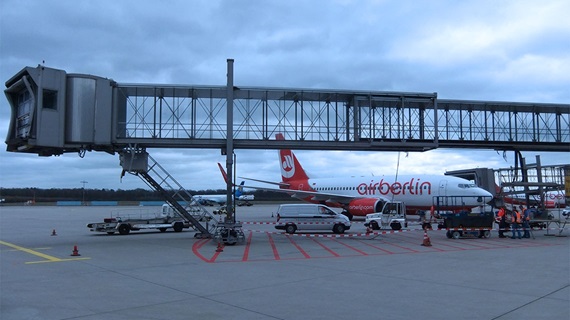
Jet bridges were devised as a way to solve the problem of handling larger and larger amounts of passengers as planes — and the aviation industry itself — grew in size. Before jet bridges, passengers would disembark onto the tarmac directly and make their way to the terminal from there. The earliest concepts of jet bridges date back to the 1950s with United Airlines’ “Air Dock” in 1954. The first jet bridge as we know them today was also developed by United and first used at O’Hare Airport in 1958.
Functionality
Jet bridges are operated via a complex system of hydraulics, pneumatics, and electronics. Most modern jet bridges have telescoping sections and vertical adjustments that allow them to accommodate various aircraft sizes and door locations. An operator controls movement and alignment via a control panel, ensuring a precise connection between the terminal and aircraft.
The cables used to carry the different signals for a jet bridge run underneath the bridge. This is most often achieved with a cable festoon system, where the cables hang loose from trolleys that move along with the jet bridge as it extends & retracts. However, the free-hanging cables pose the risk of getting caught in the wind and tangling, leading to costly downtime and repairs.
An alternative to festoons
Due to the risks of festoons — along with the higher routine maintenance costs — some jet bridge manufacturers have begun to look for more reliable, less expensive alternatives for cable management. One such alternative is a system of cable carriers that manages & protects the cables during both vertical and horizontal movement.
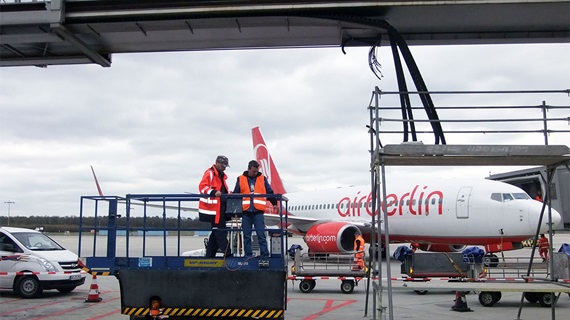
Managing cables with cable carriers provides more protection from weather effects than a festoon system. This alone makes them more reliable as there’s no risk of cables getting tangled and breaking, or adverse conditions like extreme temperatures, rain or snow reducing the overall service life of the cables. Additionally, festoons require roughly 50% more cable than a standard e-chain® installation and cables are clamped together at each trolley, making cable replacements or additions significantly more expensive.
Infographic: e-chain cable carriers vs. festoons
Jet bridge success story
e-chains have already been used to great effect in a number of jet bridge applications across the globe. One such application is at the Cologne Bonn Airport in Germany. When the first jet bridges were installed at the airport in 1999, each used four chains to manage the necessary power cables. The chains performed as required, however the systems needed to be optimized in more recent years to improve accessibility for maintenance purposes.
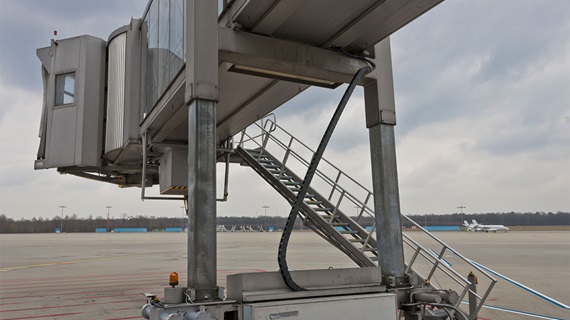
A new system composed of two opposing E4/4 chains for horizontal telescoping and an E2 "zig-zag" chain for vertical adjustment was developed. This new system was simpler and more efficient than the original solution, while still protecting the specialized chainflex® cables used to power the jet bridge. Additionally, the expected service life is 25 to 30 years!
Shop now: The ideal cable for jet bridge applications
Conclusion
Jet bridges are a staple in airports across the globe, and don’t seem to be going anywhere anytime soon. While they greatly improve the efficiency and safety of airport operations, the use of festoons limits their potential. Alternative cable carrier solutions promise to not only make jet bridge design more efficient, but longer lasting and more cost-effective as well.
Have questions about utilizing e-chain cable carriers in your own application? Contact an e-chain expert, or call us directly at 800-521-2747.

